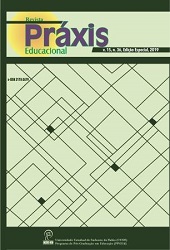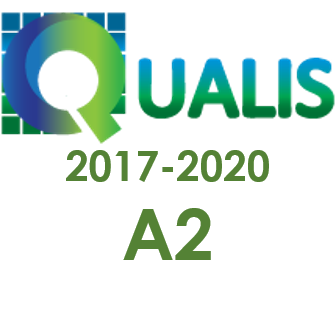A INCLUSION OF SUBALTERNIZED SUBJECTS AND CULTURES IN BRAZILIAN HIGHER EDUCATION: DECOLONIAL EPISTEMIC REFLECTIONS
DOI:
https://doi.org/10.22481/praxisedu.v15i36.5905Keywords:
Decoloniality, Higher education, Social inclusion of indigenous and blacksAbstract
This article reflects on the inclusion of inferiorized subjects and cultures in Brazilian Higher Education, from a decolonial theory. This is a qualitative bibliographical/ documentary research, linked to Blumenau’s Regional University - FURB Educogitans Research Group in the Education Master Course Postgraduate Program, Blumenau, Brazil. The issue raised was: how is the inclusion process of inferiorized subjects and cultures promoted in Brazilian higher education? The methodology employed researched books and scientific publications in magazines and on the internet. This research stars with a brief history about the concepts of bodies, their aesthetics, their cultural manifestations, how these factors influence the process of social inclusion and, mainly, in the access to Brazilian university courses, taking as reference public universities in the five regions of the country. As a theoretical basis, the production of the Modernity/ Coloniality Group was employed, those consisting of Latin American and Caribbean authors who idealized the decolonial critical theory and Brazilian authors such as Freire, Candau and Fleuri. From this theoretical contribution it was possible to understand how access to higher education by inferiorized social classes that are excluded and marginalized by the capitalist neoliberal system is happening in Brazil.
Downloads
Metrics
Downloads
Published
How to Cite
Issue
Section
License
You are free to:
Share - copy and redistribute the material in any medium or format; Adapt - remix, transform, and build from the material for any purpose, even commercially. This license is acceptable for Free Cultural Works. The licensor cannot revoke these freedoms as long as you follow the terms of the license.
Under the following terms:
Attribution - You must appropriately give credit, provide a link to the license, and indicate if any changes have been made. You may do so in any reasonable way, but not in a way that suggests that you or your use is endorsed by the licensor.
There are no additional restrictions - You cannot apply legal terms or technological measures that legally restrict others to make any use permitted by the license.










